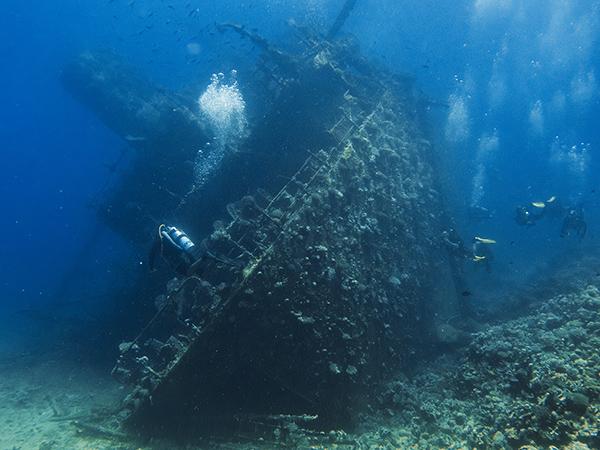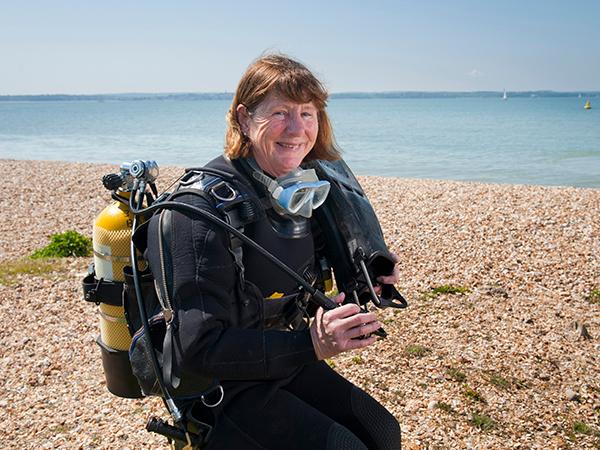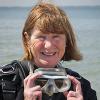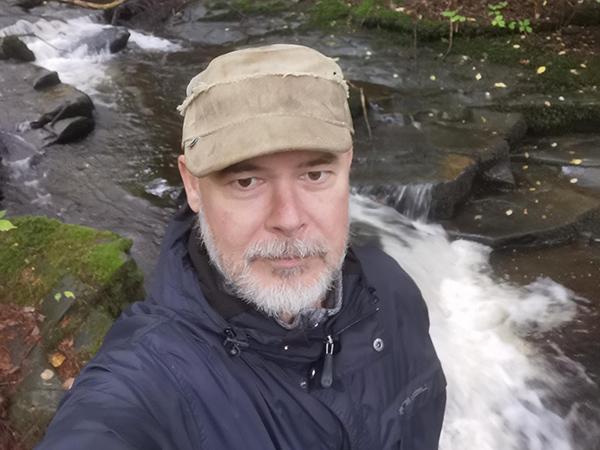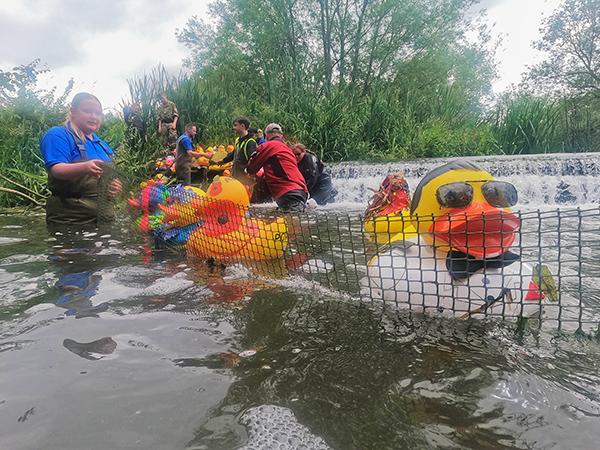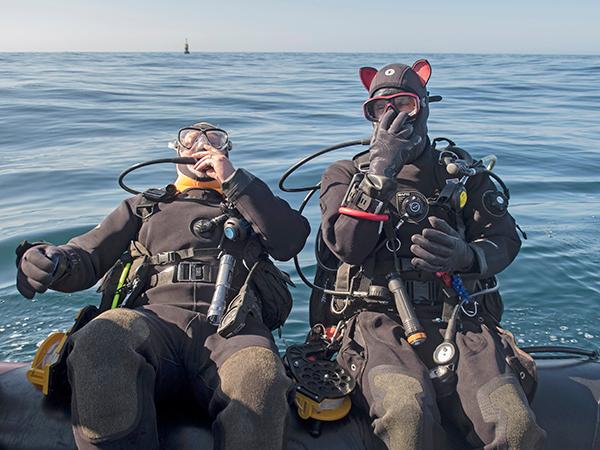The below FAQ has been created to answer your immediate questions about teaching AOD in your club.
If you have any additional specific questions regarding the new Advanced Ocean Diver course, please email drt@bsac.com.
What are the benefits of Advanced Ocean Diver for clubs?
As well as clearly being a benefit for BSAC Centres when it comes to competing commercially against the other key training agencies, the introduction of Advanced Ocean Diver is a positive for clubs too.
As a totally optional course, clubs can choose to offer AOD to its newly qualified Ocean Divers (ODs) in order to maintain training momentum and boost member retention. The course will also enable ODs to extend their depth range so that they can participate in more of a club’s dive trips as well as support them towards the completion of Sports Diver.
It also provides more choice for club members, whether they are a diver who doesn’t want to go beyond 30m or a newly trained other agency diver looking to dive deeper while working towards Sports Diver. And, of course, there’s the opportunity for clubs to recruit AODs who have trained with an overseas centre and are now looking to pick up their diving and training with a club back in the UK.
What lessons/modules is the AOD course made up of?
To enrol on the Advanced Ocean Diver, a trainee will need to have successfully completed the BSAC Ocean Diver course (or have an equivalent other agency qualification with Nitrox training). They must also be aged 14 or over to be able to progress to depths up to 30m.
As an Advanced Ocean Diver trainee, they will then be expected to complete the following to obtain their AOD qualification:
Theory:
- Four theory modules to cover the equipment and techniques used to support deeper diving (these lessons can be classroom-based or delivered via eLearning)
Practical:
- An optional skill refresher session
- Two open water lessons
- Two depth progression dives (25/30m)
- A compass lesson which can be integrated into any of the other dives
What Nitrox training do AODs get?
Advanced Ocean Divers receive the same Nitrox training as Sports Divers so can use it to both extend dive time and increase safety.
How do we progress a diver to Sports Diver, that joins our club as an AOD?
A new member with an Advanced Ocean Diver qualification will need to buy the Advanced Ocean Diver to Sports Diver pack, which includes the outstanding theory sessions and practical lessons they need to complete.
How long will it take to deliver an AOD course?
There is no set timescale for the delivery of the AOD course for BSAC clubs. However, the practical element of the Advanced Ocean Diver course can be done in a little as two days and the theory sessions can be completed by the student either in their own time via eLearning or face to face with an instructor.
This makes the course possible to facilitate during a club dive trip or over several weekends. However, the course has also been designed to be flexible to suit a club’s instructor capacity and its trainees’ needs and availability.
Can someone training to be a Sports Diver qualify as an AOD?
Yes, the process is fairly simple and is explained on this page.
How can a Sports Diver trainee with the relevant modules signed off apply for an Advanced Ocean Diver QCard?
Find out on this page.
Are the equivalent modules in Advanced Ocean Diver different to those in Sports Diver? If so how and can we teach them both together?
The following modules are identical and can be taught together
- AOT2 and ST3 – Equipment and techniques
- AOT4 and ST5 – Breathing gas planning & systems
- AOO1 and SO2 - Use of surface marker buoy
- AOO2 and AOO3 contains the content from SO4 Compass navigation and DSMB deployment
Where is the instructor manual for the AOD course?
The full Advanced Ocean Diver instructor manual is available for BSAC instructors to download in the instructor materials section on the website along with all necessary AOD documents and resources.
Are there student materials for the AOD course if members just want to do that and not a full Sports Diver course?
Yes, if a qualified Ocean Diver only wants to progress their diving to 30m without doing the full Sports Diver course, they can buy the Advanced Ocean Diver student pack from the BSAC Shop.
Is there eLearning for the theory element?
eLearning is available as an option for all the theory elements of the Advanced Ocean Diver course. This gives the AOD student greater flexibility as to how they learn as well as the option to complete all the theory in their own time.
What format are the AOD student materials available in and how much are they?
The Advanced Ocean Diver student materials are only available in a digital format but include a physical QCard. The AOD student pack can be bought online in the BSAC Shop for £20.
Won’t this new course devalue or lessen the motivation for members to progress to Sports Diver?
The purposes of the new Advanced Ocean Diver course are to ensure BSAC remains commercially competitive while giving new BSAC divers more choice and flexibility as to how they progress.
The intention is not to devalue Sports Diver or detract trainees from continuing to the grade. Rather, it is intended to meet the need of any Ocean Diver who wants to safely progress to deeper depths before completing their Sports Diver. It is not a mandatory course but does mean that qualified AODs can then join a club dive that’s beyond OD depth limit before they become a Sports Diver.
AOD can also be used to maintain motivation in a newly qualified diver and help to keep them engaged as they progress with their training to Sports Diver. It is likely that a small number of members will opt to do AOD and not progress to SD as they have no desire to dive deeper than 30m. However, our stats show that a large proportion of other agency divers who have joined BSAC with a qualification the equivalent of Advanced Ocean Diver go on to complete Sports Diver.
This should reassure members that the new AOD course is an asset to the Diver Training Programme and not one to detract from Sports Diver, which remains a key BSAC diving grade.
Why are we using Advanced in the name of this new diver qualification – doesn’t it conflict with the Advanced Diver grade?
The name ‘Advanced Ocean Diver’ has been deliberately chosen to create a commercial impact in the entry-level diving market and to clearly position it alongside the other agency equivalents.
The name of BSAC’s Advanced Diver grade has also been under review, with the consensus being that it no longer accurately reflects the true standard and nature of this qualification.
A review will be completed to ensure that Advanced Diver is more accurately renamed so that it both values and clearly communicates the expeditionary and adventurous diving intentions of the grade. Full details of the review, including member consultation, will be released in due course.
Why is 14 the minimum age for Advanced Ocean Diver but Sports Diver is only 12?
BSAC’s policy, based on advice from the UK Diving Medical Committee (UK DMC), is that young people should not dive below 20m until they are 14 years old. Diving to 30m is an integral part of the Advanced Ocean Diver course.
The maximum depth reached on the Sports Diver (SD) course is 20m and depth progression only occurs once the qualification has been gained. Younger divers who complete SD are limited to 20m until they reach 14 years old.
Can an other agency diver with a qualification the equivalent of AOD (e.g. A PADI Advanced Open Water Diver) skip sections of their Sports Diver training if they join BSAC?
The instructor manual provides information on adapting modules for other agency divers and this must be used as the primary source of guidance.
Once copies of existing qualifications have been examined and copies sent to BSAC HQ, an assessment of current abilities should be made. The outcome of this will then allow an instructor to make a judgement of the likely in-water competence of the individual in the relevant local conditions. It may be beneficial to confirm this with a dive.
Based on this, instructors should be able to tailor the course to meet the requirements of the other agency diver and the previous training they have received. Instructors can use their judgement of whether simple checks of skills or the full training sequence is required.

